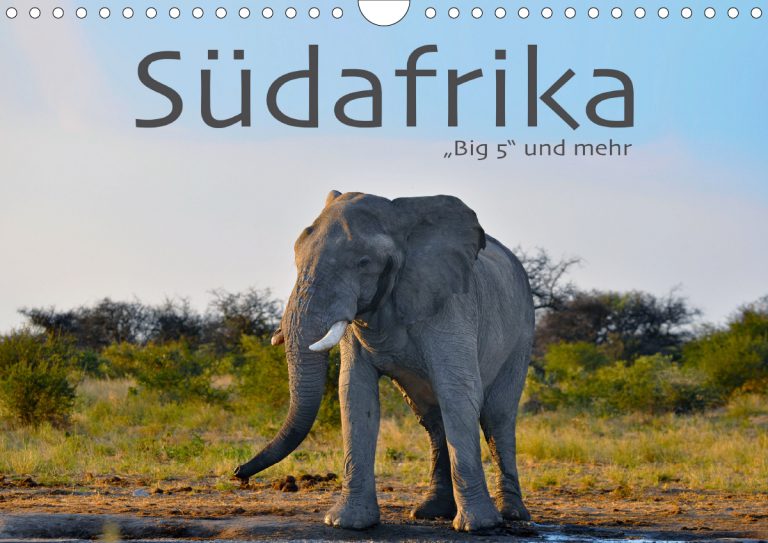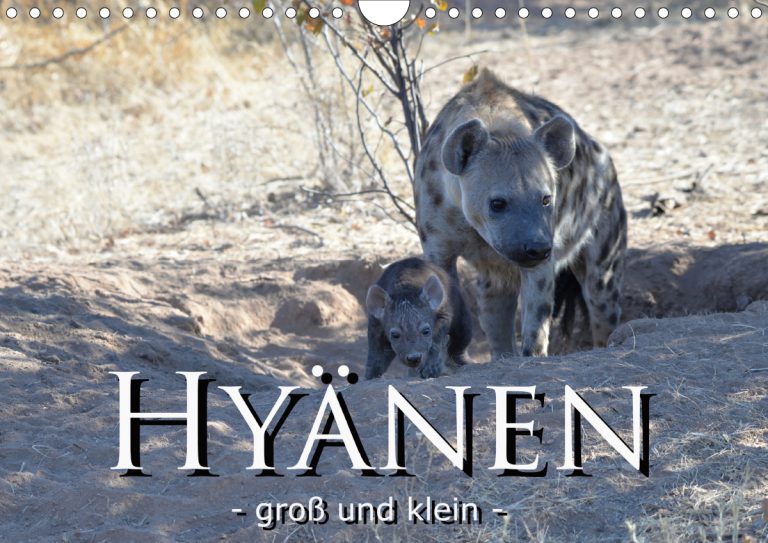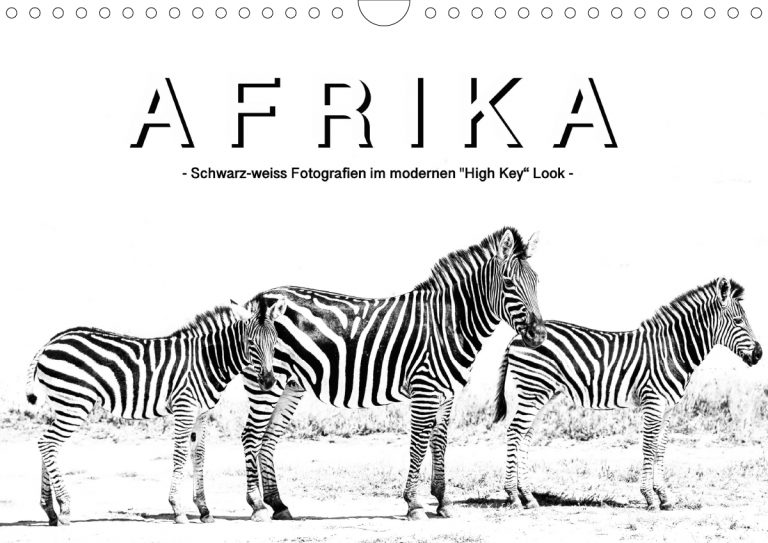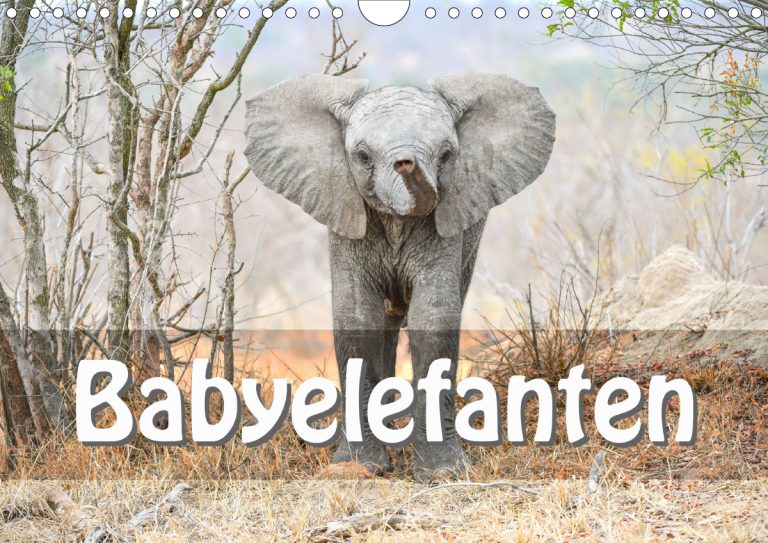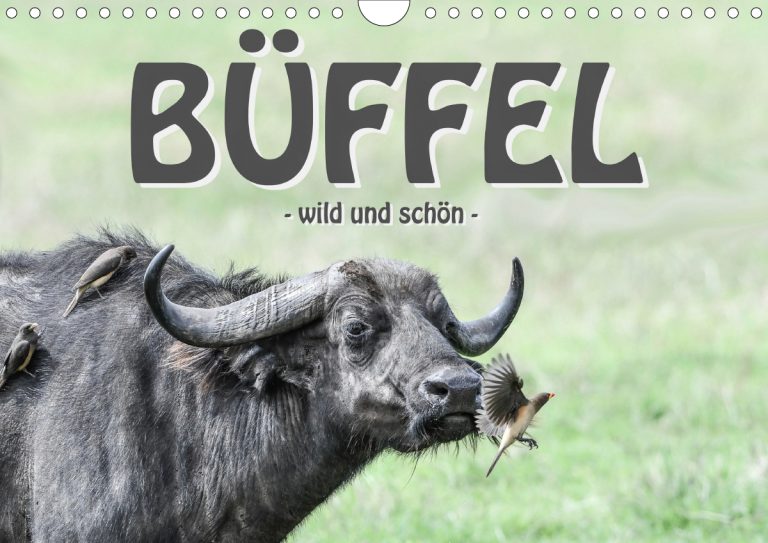Travel Report Hwange (Zimbabwe)
Hwange National Park (formerly Wankie National Park) is the largest national park in Zimbabwe, covering 14,651 square kilometers. Hwange is located in the west of the country in the foothills of the Kalahari on the border with Botswana and 200 km northwest of the city of Bulawayo. The park, which is home to a great variety of species, is one of the most important nature reserves in the country.
You can arrive by plane or by car, although we definitely recommend the plane due to the road conditions.
With over 50,000 animals, Hwange National Park has one of the highest elephant populations in the whole of Africa and this makes the park particularly interesting for photographers, especially as you are allowed to leave the vehicle with the right guide.
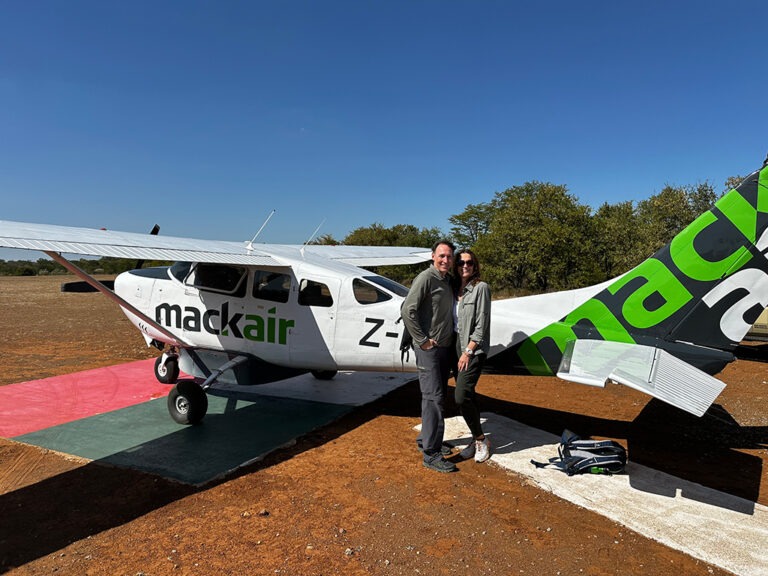
Which lodges do we recommend in Hwange National Park?
We only recommend lodges that we have visited ourselves. In Hwange National Park these are the following lodges, which we describe in detail below:
In the north-western part of the park:
- Deteema Springs Camp
In the south-eastern part of the park:
- Verney’s Camp
- Somalisa (we did not stay overnight ourselves, so the lodge is not mentioned further in the report, but can still be recommended, due to positive recommendations of other travellers we met).
Deteema Springs and Verney’s camp are both offered by Machaba Safaris, whereas Somalisa is offered by African Bush Camps. Both are top level safari tour operators.
Where are the lodges in Hwange National Park?
Arrival in the Hwange National Park
From Europe, you usually fly via Johannesburg, on to Zimbabwe and then either to Harare or Victoria Falls. There are a number of airlines, but we would only recommend Airlink. A former subsidiary of South African Airlines, it is reliable, safe and offers a good service.
The journey to Hwange National Park is then also usually by plane from Victoria Falls or Harare. Due to the short distance from Victoria Falls to Hwange (approx. 30min flight), most people choose Victoria Falls. The flight is operated by small aircraft and is offered by various operators, e.g. Mack Air. For the north-western part, you usually fly to Robin Airstrip. Somalisa and Verney’s Camp share their own airstrip. Alternatively, you can take the car from Victoria Falls and then it’s a 5-6 hour drive or more, depending on which camp you choose. Not recommended due to the road conditions.
Sample itinerary for 14 days on safari with various national parks and lodges in Zimbabwe
Very few people fly to Zimbabwe and then only want to visit one national park. For this reason, we have put together a sample itinerary here:
- 1 night in Harare – Highland House
- 4 nights in Mana Pools – Nyamatusi Lodge
- 3 nights at Lake Kariba – Bumi Hills Lodge
- 2 nights in Hwange North – Deteema Springs Camp
- 2 nights in Hwange South – Verney’s Camp
- 2 nights in Victoria Falls – Pioneers Lodge
What you should definitely think about when traveling to Zimbabwe:
National currencies: Although Zimbabwe now has its own currency, you can pay for everything in Zimbabwe with US dollars or, if necessary, with euros. Cash, especially smaller bills, should be taken along for tips and entrance fees, such as parking fees, cabs and visas. Otherwise, credit card payments often only work in hotels, tourist facilities and restaurants.
Vaccinations: Coming from Germany, no vaccinations – not even yellow fever – are mandatory. However, the standard vaccinations are recommended, see Foreign Office suggestions. Malaria prophylaxis applies to the whole of Zimbabwe and should be taken especially in Mana Pools and Lake Kariba.
Visa: For Zimbabwe you need a visa, which is issued directly on arrival and currently costs 30 $ per person. It is issued relatively quickly.
Luggage: If you are traveling by small aircraft in Africa, you should pay attention to “soft” luggage (e.g. sports bags), the weight limit and cabin luggage dimensions. Photo equipment should definitely be taken on board. Suitcases are not permitted and, depending on the airline, a maximum of 15-20 kg/person of luggage (does not apply to international flights).
Helpful: A powerful flashlight with spare batteries is often very useful. A cell phone flashlight will also do in a pinch, but often does not shine far or brightly enough.
Clothing: What should you take with you? First of all, this depends on the season, so check the weather beforehand. In general, we recommend packing according to the onion principle and thus being prepared for cool or even cold temperatures (especially at night and in the morning) as well as warm to hot temperatures (during the day). As you can usually have your clothes washed in the lodges in Africa free of charge or for a small extra charge (possible in all the lodges we mentioned), you can manage with very little luggage if you wish. This saves a lot of weight.
What photographic equipment should I take with me?
The minimum you should have with you is a smartphone with a good camera. Even if you don’t believe it, the photo and especially the video quality is more than adequate for many animal encounters,
However, this will not be enough for ambitious photographers. So it should be at least a DSLR or one of the newer mirrorless cameras.
You can see our choice of camera at the end of the article, but basically you should have at least one telephoto lens and one wide-angle lens with you and if you can afford it, you should also have a powerful lens.
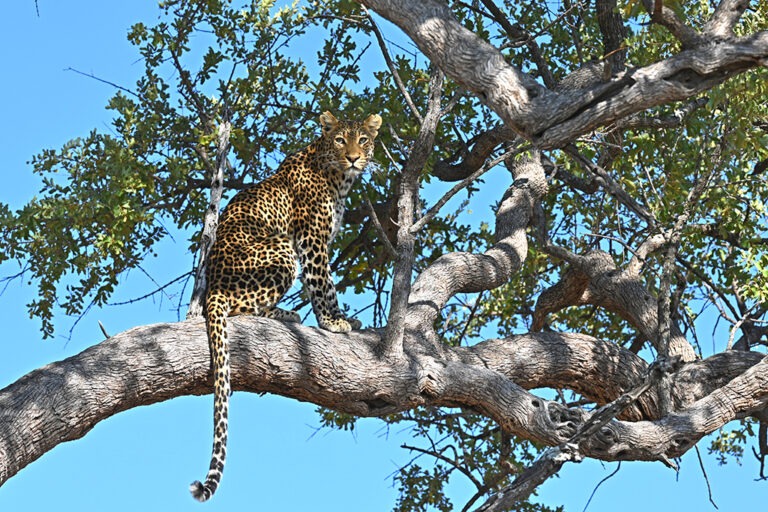
Before the trip, think about which animals you want to focus on and choose the lenses accordingly
If you are traveling in Hwange National Park, you need to be aware of 2 things. Most of the animals you will see here are elephants and they are very large. In most cases, a focal length of 70-200mm is enough to take great photos. At the same time, the national park is not an “off-road” area, which means that you have to stay on the paths and then it is an advantage to have more than just 200mm with you. As you are usually out and about in Hwange National Park in good light conditions, particularly fast lenses are not a must, but of course an advantage. If you want, you can also use a wide-angle lens for the fantastic landscape, e.g. a 24-120mm. However, a smartphone often does the trick here too. One more tip. Dust is a big problem in Hwange, which is why we cannot recommend changing lenses during the safari drives.
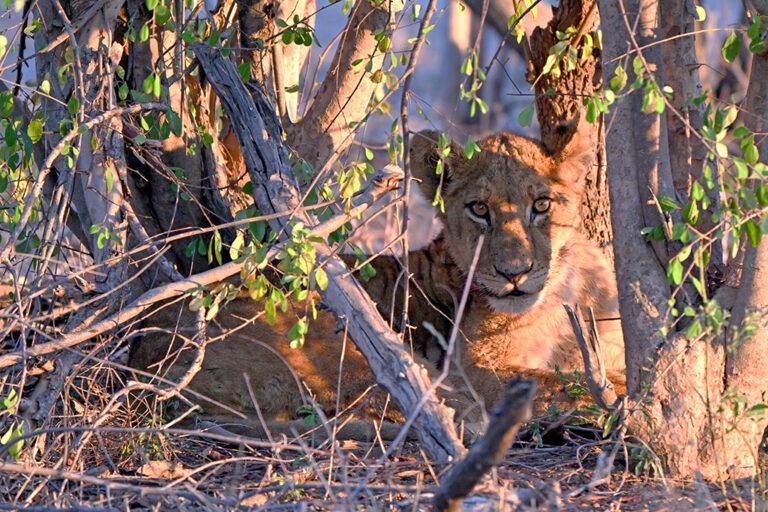
How do game drives work at the various safari lodges?
The safari days basically all follow the same pattern. Wake up between 05:30 and 06:00 and a light continental breakfast between 06:00-06:30. The first game drive starts at 06:30, also with breakfast coffee. The morning drives last until 11am, sometimes longer if the sightings are good. The times vary slightly depending on the lodge.
In the afternoon we leave around 15:30 and return around 18:00, as the park officially closes. You can then drive further on the lodge’s own concession, but this is a maximum of half an hour more, by which time it is too dark. Night drives are not usually offered. Dinner starts around 19:30, usually with a drink at the boma (campfire), where you can chat with other guests. At good lodges, the menu is presented personally by the chef, including a wine recommendation, and after dinner it’s usually straight to bed.
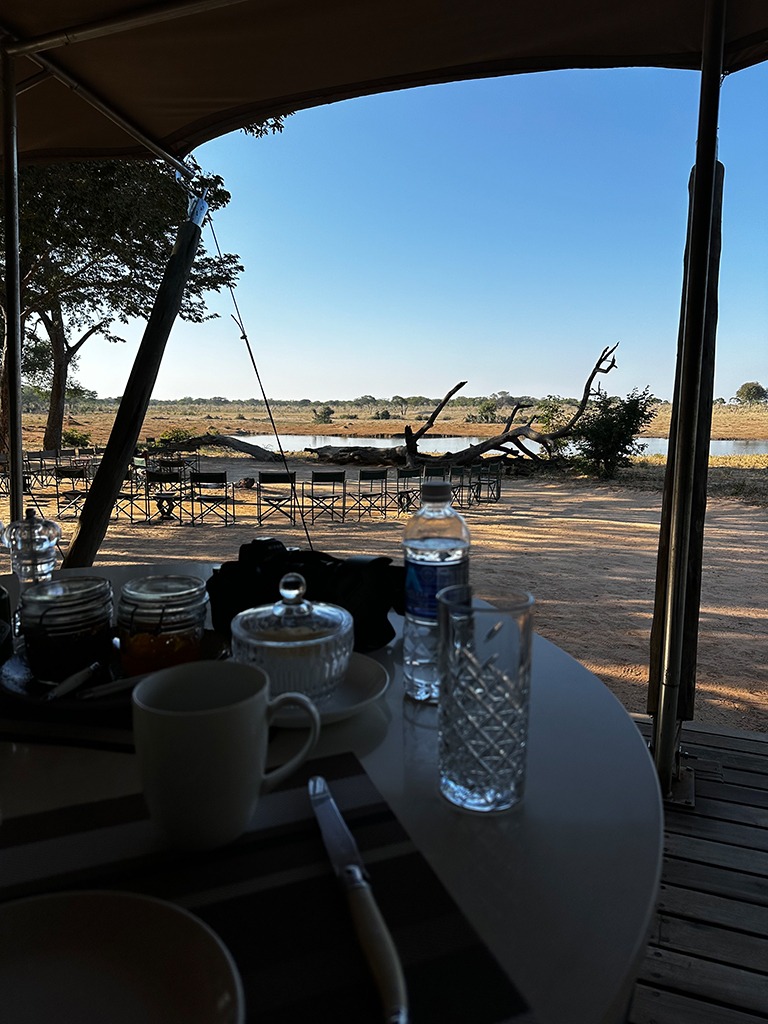
The time between the game drives is at your disposal, you can do sports, sleep, relax or whatever. As a photographer, you naturally also use the time to take pictures around the lodge, as there is also a “wildlife” here.
Lodges in Hwange National Park
Deteema Springs Camp in northern Hwange National Park
Our first camp is Deteema Springs, which is best reached via the Robin Air Strip. From there it is about a 45-minute drive by off-road vehicle to the camp. The camp is a tented camp of a very good standard. It cannot be compared with a luxury camp. But it can certainly be called glamping. The tents have comfortable beds, electricity, showers, an indoor bathroom and are located on wooden platforms. We were given tent number 6 and this is by far the best tent in the camp as it has a direct view of the fresh water source where hundreds of elephants come to drink every day, as well as many other animals. You can practically go on a balcony safari from this tent.
Food and drinks
As mentioned, the camp is not a luxury camp and so the food is of a good, but not exceptional standard. There is a continental breakfast in the morning before the game drive and lunch after the game drive. In the afternoon, before the second game drive starts, there is the usual high tea and then dinner after the game drive. If you are lucky enough to have “King” as your host, you will be rewarded with the most amazing service.
Safari times
Wake up at 5:30 am, you are not allowed to leave the tents on your own and will be picked up by the guide at 6:00 am. The first game drive starts at 6:30 am and lasts until eleven or 11:30 am, depending on the sightings. There is a coffee break in between. The second game drive starts between 3:30 p.m. and 4:30 p.m., depending on how you decide with the guide, the well-known sun downer stops are made during the drive.
Temperatures
Hwange National Park can get very cold in the winter months. So you should definitely bring warm clothing according to the usual layering principle. It is always very hot during the day, even in the winter months. At night, the tents are equipped with wamre blankets and hot water bottles, which is very pleasant.
Comfort in the tents
Deteema Springs Camp is certainly not a luxury camp in terms of food, but although the tents are small, there is every conceivable comfort here and the facilities have been well thought out. There are USB and normal sockets by the bed, which is also where the light switches are. There are enough sockets in the tent for all charging devices, both with European connections and the plugs for Zimbabwe (you should definitely have an adapter with you anyway). The bathroom and shower are inside and easy to reach at night if necessary. There are no mosquito nets, but they are not necessary in the tents.
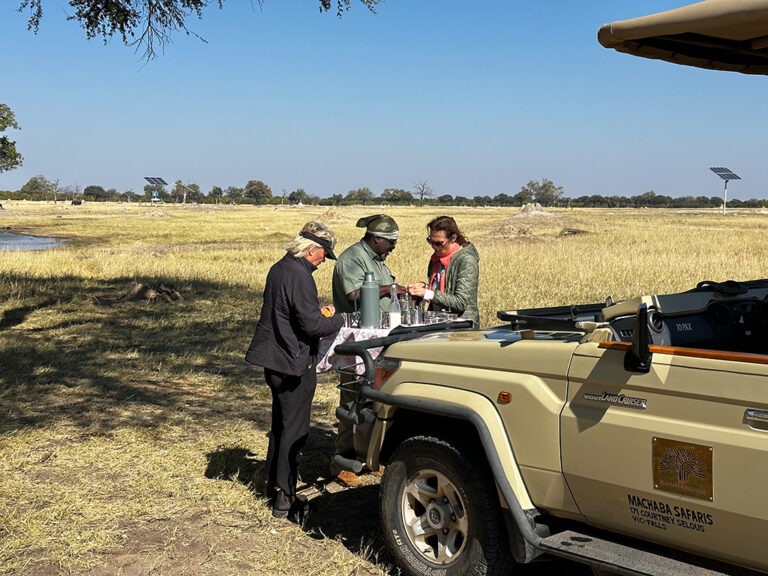
Facilities Deteema Springs Camp
Deteema Springs is, as the name suggests, located at a spring and a dam. Because of this and also the fact that it is an open camp, i.e. it has no fences, there is an extremely high abundance of wildlife here and you can practically watch animals from your veranda all the time, which is incredibly beautiful. The lodge has a total of eight tents and an open main tent where you can relax at any time. There is also a small pool where you can cool off in the heat. There are also sun loungers and umbrellas. Surprisingly, the lodge has Wi-Fi, not only in the main area, but also in the cells. Whether you need it is up to you to decide. The best tent from our point of view is tent no. 6, followed by tent no. 7.

Animal sightings Deteema Springs Camp
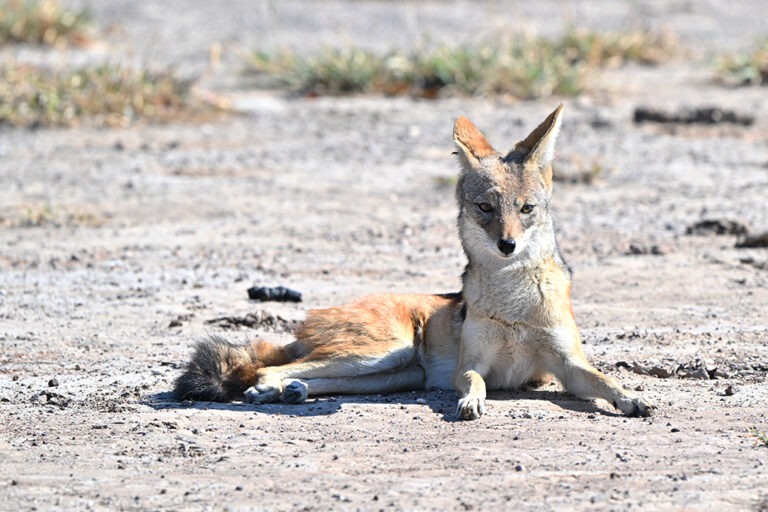
The Hwange National Park is large and, as the name suggests, a national park. This essentially means that you have to drive on the existing roads, which are in more or less good condition in the northern part. In between, there are some very rough sections, but there are also good sections that are fun to drive on. Overall, however, this is not a park for people with back problems. The lodge itself has a small concession on which only the lodge is allowed to ride. In this respect, you always switch between the lodge area and the public national park. The number of elephants in this park is incredible. We have rarely seen such large, continuous herds as in this national park. But you can also look forward to exciting animal sightings elsewhere.
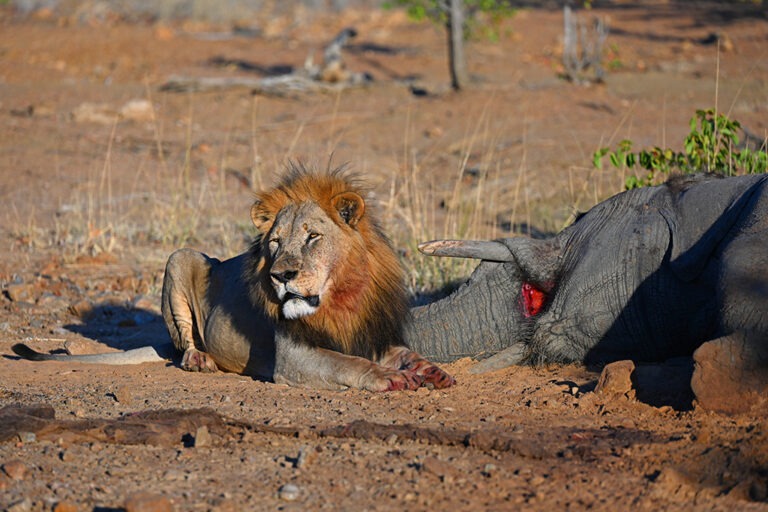
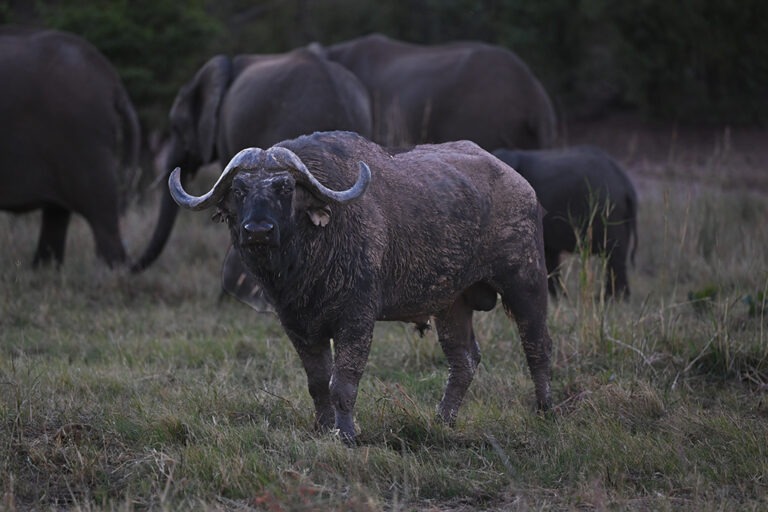
Verney's Camp in souhern Hwange National Park
The camp is the sister camp of Deteema Springs and also belongs to the Machaba Safaris group.
As both camps are located within the same national park and belong to the same group, the transfer is by safari drive. The transfer takes just under 4 hours and you cross the park from north west to south east. However, there is also the option of flying again.
Verney’s Camp is the flagship camp of the Machaba Group in Hwange National Park.
Verney s Camp is situated at a very large waterhole, which is only a few meters away from the open main area.
The furnishings are in African safari style and of high quality. The fire pit is located directly in front of the main area, so that you have a perfect view of the waterhole at all times. The tents themselves are set very far apart. The camp stretches over a total length of 1.2 km.
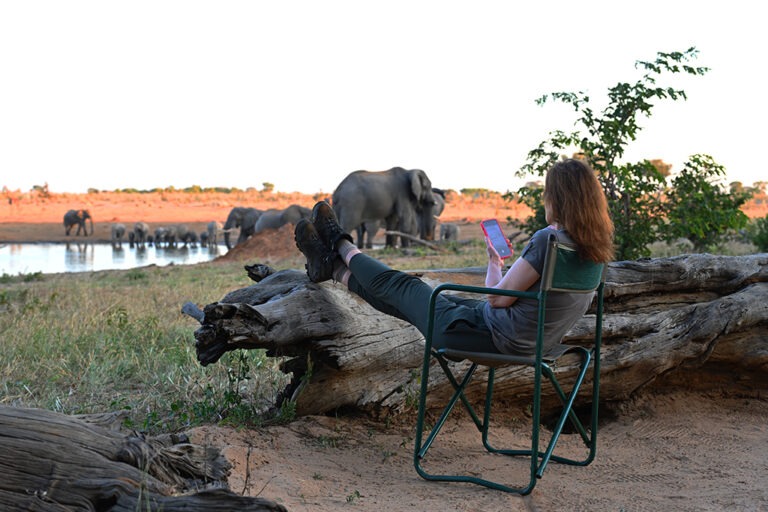
Tents in Verney's Camp
There are ten tents in total, two of which are family tents. The tents are numbered from 1-10, with 1 and 10 being the furthest away. The two family tents are directly adjacent to the main area, which divides tent numbers 1-4 and 5-10. 4 and 5 are the family tents.
The best tents from our point of view are tents number 6, 7 and 8, as these have a direct view of the waterhole and the walking distance to the main area is still bearable.
Unfortunately, we had tent 10, which is not recommended in any way. The tent is rarely used due to its distance from the main area, so you have to check everything in advance, for example whether there is hot water, whether the shower works or whether the electric blankets are even available for the very cold nights, which was not the case for us on the first night, for example.
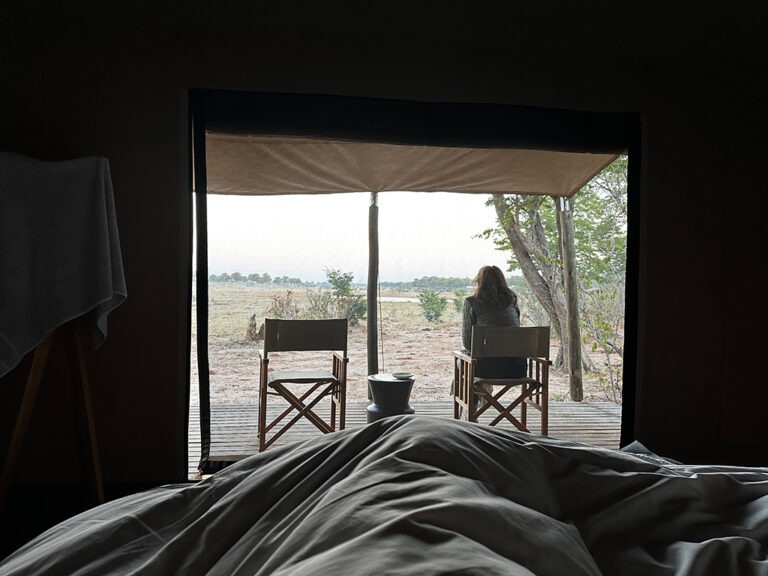
Without electric blankets or hot water bottles, it can get very cold in the tent during the winter months. You also need to check the lamps as several of them didn’t work in our tent. So it’s always good to have a flashlight with you. Another drawback, at least in tent 10, is the barely functioning shower, where you can literally jump from water jet to water jet. This is certainly a shortcoming, especially for longer stays.
A special feature of the camp is that elephants regularly walk between all the tents to the water points, which is why extreme caution is required every time you walk between the main area and the tent, as it can happen at any time that a mother elephant with her young will walk between the tents or even a whole herd. We had several of these encounters every day and in this case it is advisable to take refuge quickly on one of the verandas of the other tents.

If we visit this camp again, we will definitely insist on getting tent 6, 7 or 8, as we can’t really recommend tents 9 and 10 or tents 1-3. If you are traveling with your family, tents 4 and 5 are also absolutely great.
After dark, you are no longer allowed to move between the main area and the tent yourself and have to be taken by a guide.
General information about Verney's Camp
I don’t want to give the impression that Verney’s is a bad camp, quite the opposite. If you disregard our tent and have tent 6, 7 or 8 as described, then you can recommend this camp without reservation.
Service
The staff are always helpful and any faults are rectified immediately. However, in a camp of this category, it is a pity that you often have to point out relatively many defects first and that these are not checked in advance, as is the case with the tents, for example.
Safari times
The safari times at this camp are very flexible. Basically, there is a morning drive that starts at 6:30 am and, if you wish, another afternoon drive that starts at 4:30 pm. Over the three days, we did one drive in the morning and one in the evening. The morning drive was carried out from 6:30 am until almost 2:00 pm due to the good sightings. The reason why we decided not to do all the drives was the abundance of animals at the waterhole right in front of the camp. This is one of the few camps where you can really do the safari from an armchair. From the main area you have an absolutely fantastic view of the hustle and bustle, especially the elephants, at the waterhole, which is truly unique.
Waterholes and Elephants
We have been traveling in Africa for over 20 years now, so herds of elephants are nothing new to us. However, the abundance of elephants in Hwange National Park and especially around our camp dwarfs anything we have ever seen. Never before have we seen such large herds of elephants and so many herds meeting at the same time at the waterhole. It is not uncommon for 300-400 animals to come to the waterholes to drink at the same time and the volume and noise the animals make is something you will never forget. It is an extraordinary and certainly unique spectacle, which alone makes a visit to this camp worthwhile.
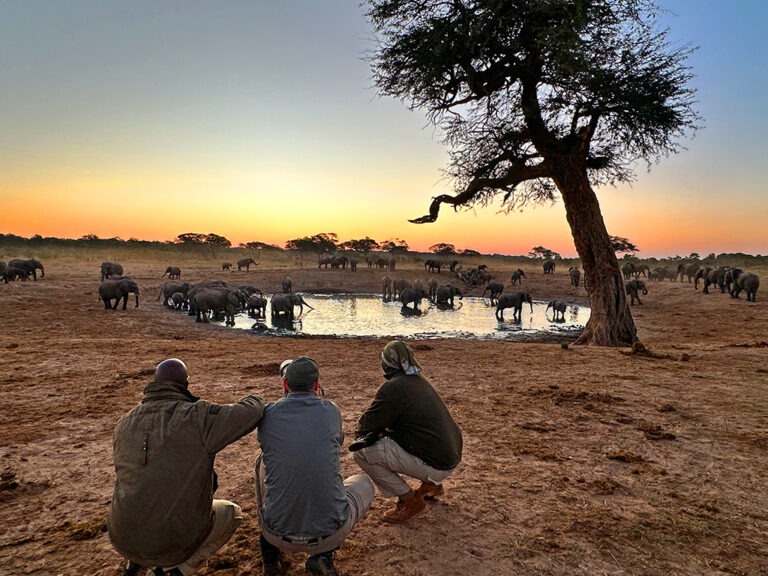
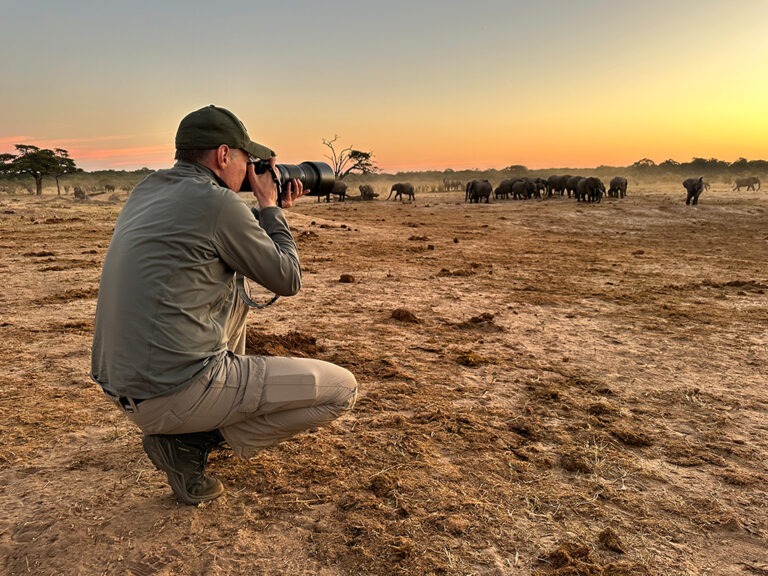

Animal sightings around Verney’s Camp
This part of the park has some very rare antelope species to offer, for example the sable or the roan antelope. There are also leopards here and we were even lucky enough to see one, which is admittedly very rare as the animals here, unlike in South Africa, are not used to the safari cars and are therefore rather shy. This part of the park also has a few prides of lion, but significantly fewer and more difficult to see than in the western part of the park. Around the camp there are plenty of giraffe and zebra as well as kudu and steenbok, which also regularly visit the waterhole. For bird lovers, the morning hours are particularly interesting as huge flocks of birds fly in, and we mean really huge flocks of birds, to drink at sunrise and thus avoid the predators.
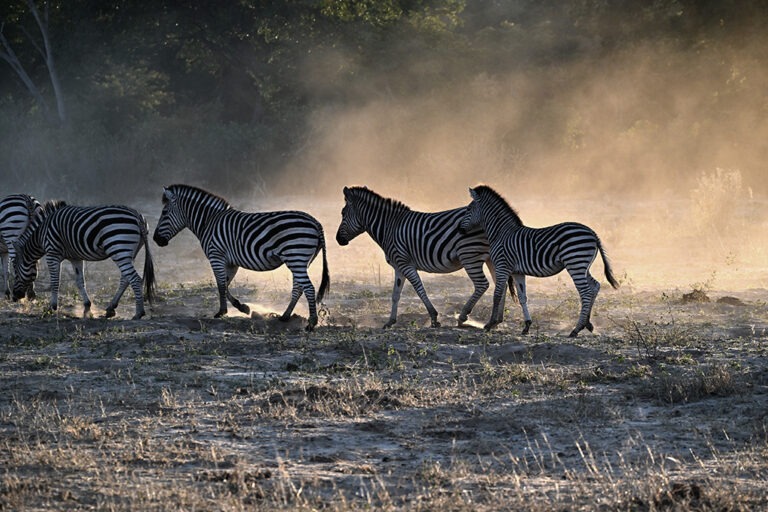
What is the best way to choose lodges in the park?
We always rely on the travel agency AST. The travel agency has a local employee in South Africa (the enchanting Ms. Csar) who knows most of the lodges and is always on hand with help and advice. When choosing a lodge, you should ask not only which lodge you like, but also the size of the driving area belonging to the lodge, the maximum number of guests per vehicle and, if applicable, whether the lodge specializes in photographers.
Good if the guide knows something about photography
This means you don’t have to constantly explain to the guide why the light is better coming from “behind”, if possible. Also important, although not easy to find out, is the density of wildlife and whether private vehicles are allowed to drive in the area, which is the case in the public part of Hwange, but not in the concessions of the camps, where they are also allowed to drive off-road.
What you should look out for as a safari newbie
For the safari novice, all these points are less important, as it is always exciting to see wild animals in the wild for the first time. This excitement does not diminish with increasing experience, but you do become more demanding when it comes to good game drives and lodges. Hence another tip. Good lodges are not cheap, but it makes a huge difference whether there are a maximum of 6 or 10 people in the vehicle.
Stay a maximum of 3, maximum 4 nights in a lodge
Based on our experience, you should stay a maximum of 4 nights in a lodge, as you have usually explored the area sufficiently after 3 days. Of course, exciting things can still happen on days 4 and 5, it is wildlife after all, but for you it is simply more exciting to discover new things again and usually most of the other guests are only there for a maximum of 3 nights, so the lodges have adjusted their program accordingly.
Our Fazit Hwange National Park
A visit to Hwange National Park in Zimbabwe is an unforgettable experience, especially thanks to its impressive elephant population. Deteema Springs Camp and Verney’s Camp offer luxurious accommodation and excellent game viewing opportunities. From the camps, visitors can observe herds of elephants at waterholes and enjoy the wild beauty of the park. The combination of comfort and closeness to nature makes a stay in Hwange particularly fascinating and leaves lasting memories. If possible, we will return here one day.

Order Calendrs from our tours ?
What photo equipment for Hwange?
The photographic equipment that we took with us to Zimbabwe is listed below. You also have the option of ordering the photographic equipment we used directly via our Photo-Store and requesting further technical details. There are also lots of extras available there.
Cameras:
- Nikon Z8
- Nikon Z7ii
- Iphone 14pro
Lenses:
- 70-200mm f/2.8 (Nikon)
- 180-600mm f5.6-6.3 (Nikon)
- 24-120mm f/4 (Nikon)
